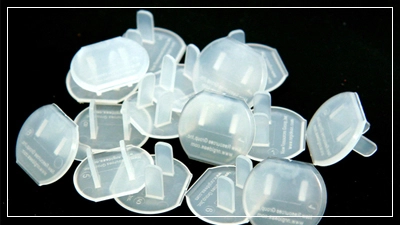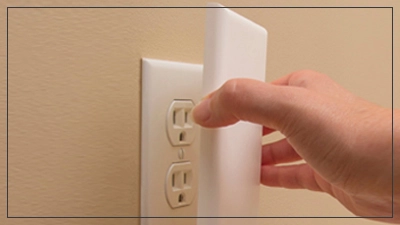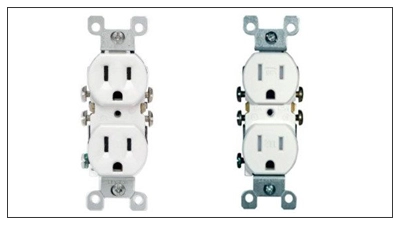There are outlets on almost every wall of the house, often low to the ground. The ease of accessibility plus the high level of danger for a little one makes it a huge household risk. But the good news is that keeping them safe isn't too difficult or expensive. Below is a list of options for childproofing your home's outlets. That way you can choose the right option for you and your little ones.
Roll Of Masking Tape: If you need an immediate solution or a temporary fix, you can tape over unused outlets. One roll should cover every low-lying outlet in the house. Covering them with tape covers them up and makes them way less appealing to a curious toddler. Masking tape works well, but you can also use duct tape if you want it to stick a little better. Duct tape could leave a sticky residue on your outlets and walls, though.

Outlet Covers: These are cheap, almost invisible, and hard to remove. That makes them useful for safety, though they can be annoying to take out when you need that outlet. There are even press-fit or locking options. Be aware that these covers only work if the outlet is new. If you have an older, looser outlet, these might not stay in. And if your covers are loose, they can turn into a choking hazard. You can also go with a full decoy panel to cover the whole thing instead.

Outlet Cover Plates: Instead of getting something to put over your sockets, you could upgrade the plate itself. It's as easy as unscrewing the old plate and placing the new one over the top. These sliding cover plates shift the position of the receptacles, so they don't line up. If someone wants to use the outlet, it's as easy as moving the spring-loaded cover over to stick in the plug. When you remove the plug, the cover snaps back into place.

Tamper-Resistant Outlets: Tamper Resistant Outlets have spring-loaded shutters that close off the slots. When you stick a plug into the outlet, both springs get pressed and let the shutters open. That lets the metal prongs close the circuit. The shutters won’t open when a child tries to stick something into only one opening. These are some of the best tools for preventing electrical injuries. On top of that, the National Electrical Code requires them for all new or remodeled homes.
